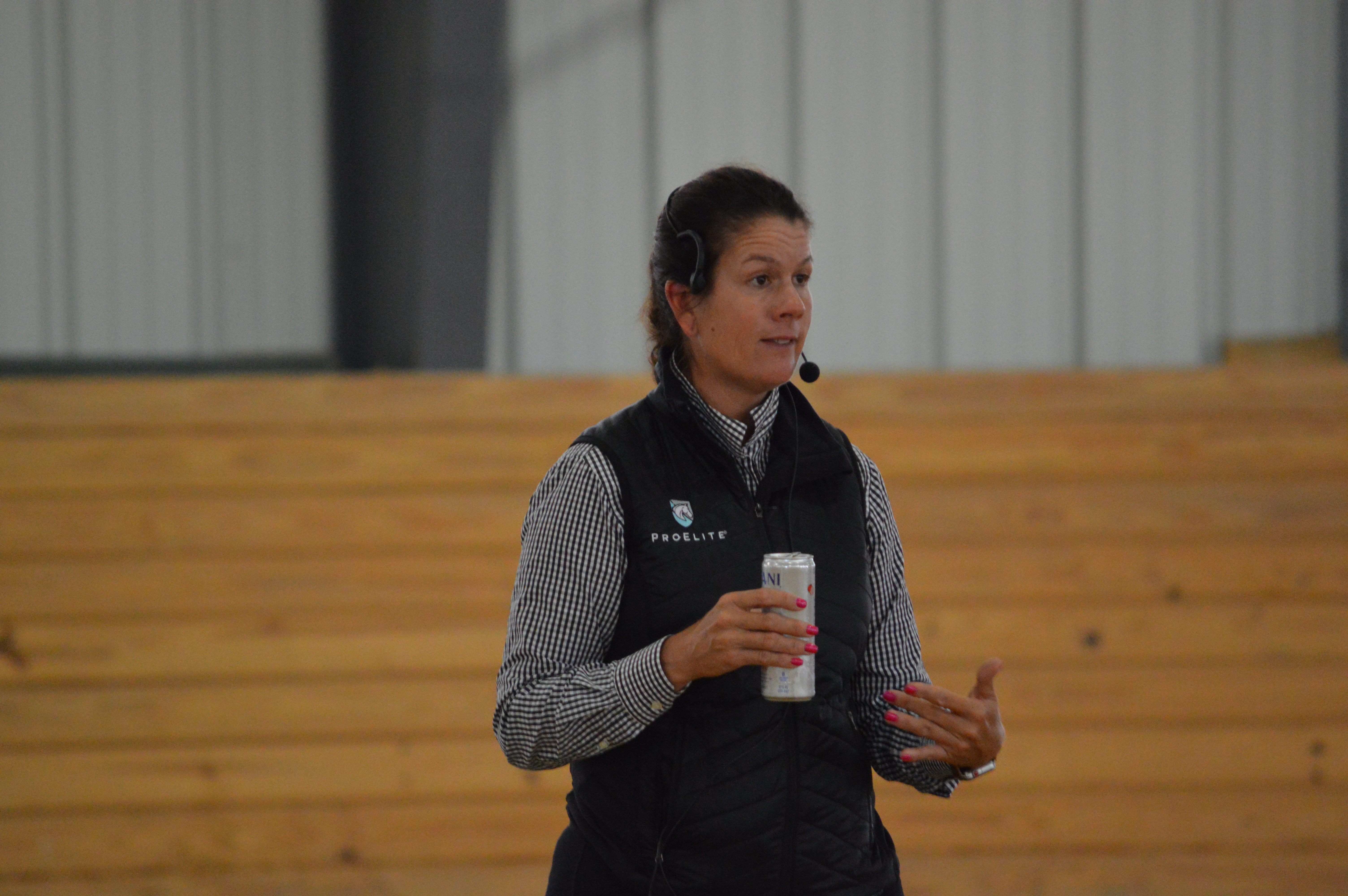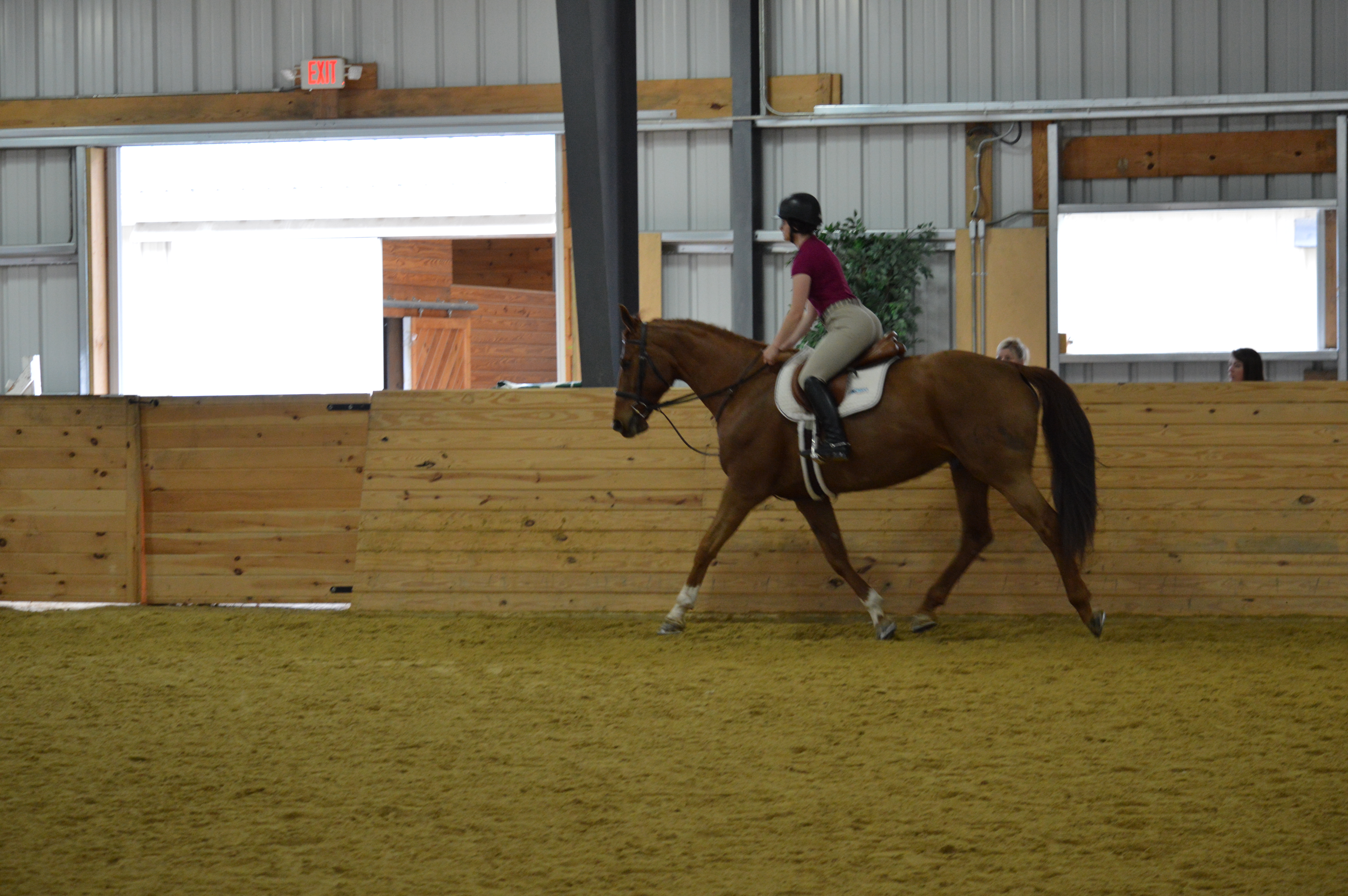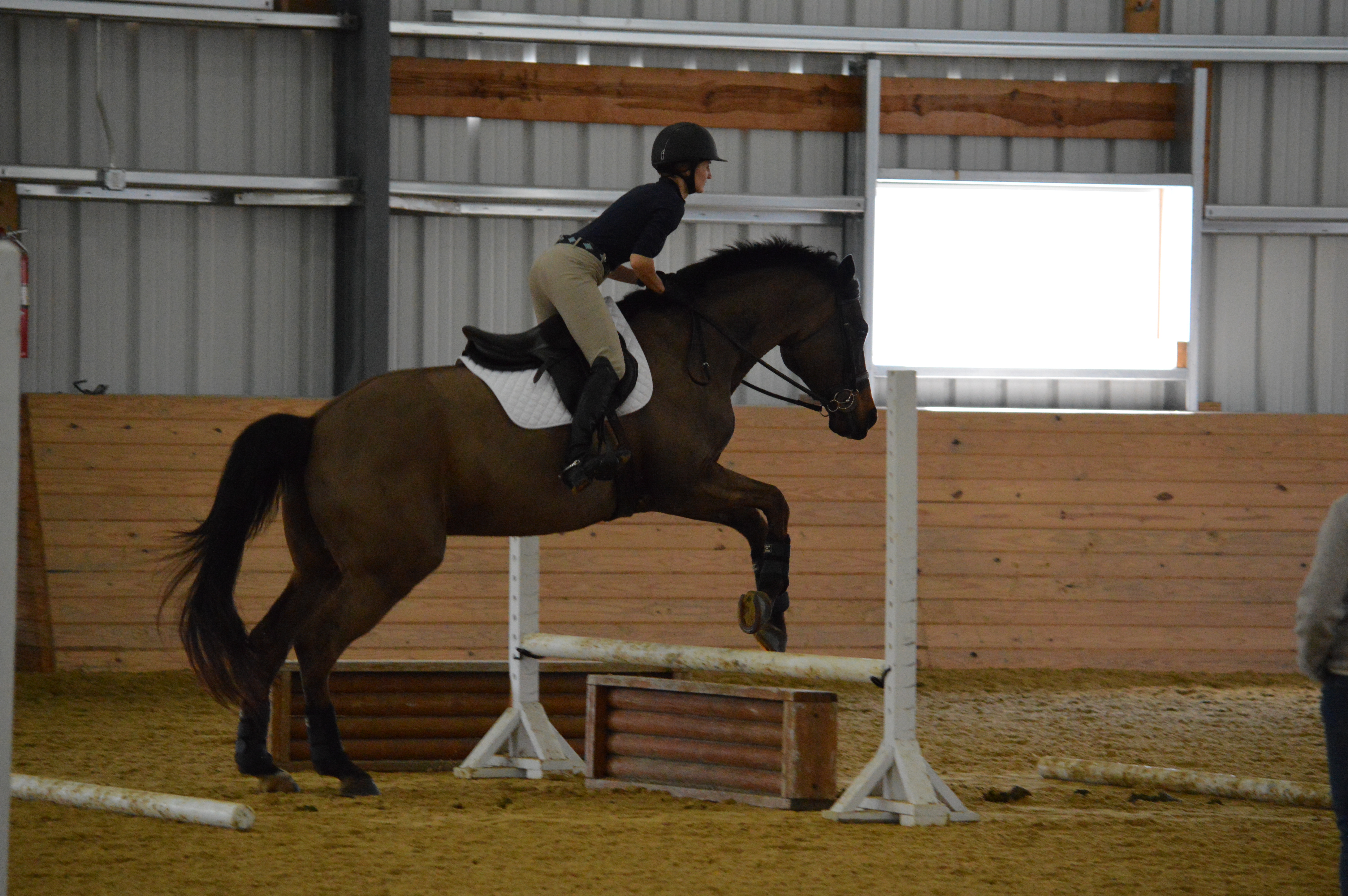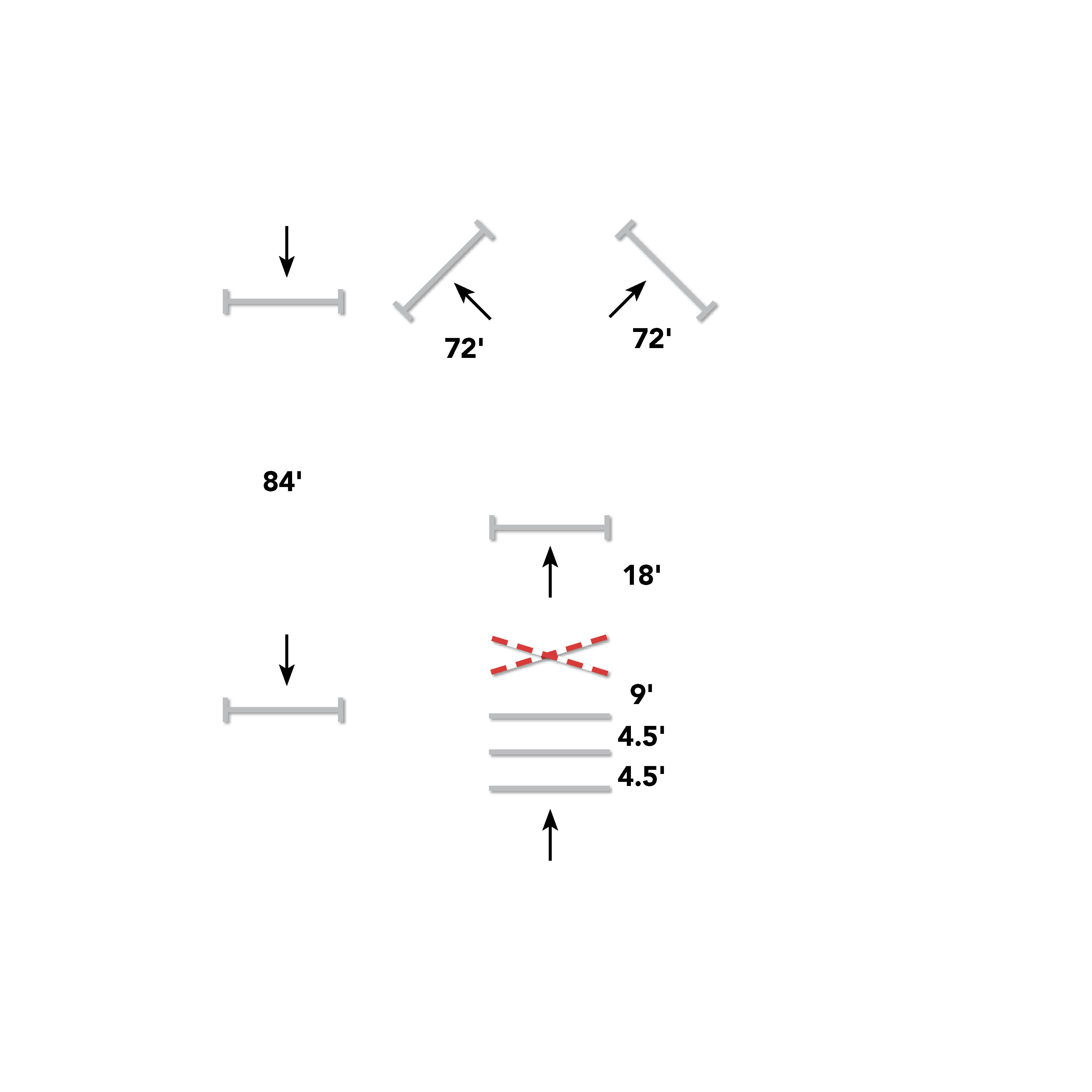Clinic participants carefully listened to the reigning World Champion Hunter Rider Professional Rider of the Year Amanda Steege as she emphasized the importance of an effortless-looking partnership in the hunter ring. Extremely encouraging and supportive, Steege coached the riders through the challenges they faced with her calm and positive demeanor. The clinic, held at the Marlboro Ridge Equestrian Center in Upper Marlboro, Maryland on April 13, was part of the Maryland Sporthorse Clinic Connection. Steege’s two-day clinic was intended to help hunter riders improve their handy rounds, but for the first day she focused on the basics and encouraged riders to work on their horse’s adjustability and to make their rounds look smooth and effortless.

First, Flatwork
All three sessions had a similar theme but progressed along with the riders’ and horses’ experience. First in the flatwork at trot, Steege had the riders get in their two-point position on one long side of the arena. Then, she asked them to lengthen the trot down the long side while closing their hip angle and riding with short reins with long arms to “follow the horse with their position,” before asking them to collect in the corner after the long side. When collecting, Steege had riders slow their post down and shorten the frame. “I want to see a difference in the speed between the lengthening and collecting,” Steege said. Riders did the same exercise in the opposite direction, first getting in two-point down the long side and then lengthening followed by collecting in the corner. This exercise helped riders practice asking the horse for changes in pace using nearly invisible aids—an essential on-course skill.

After a quick walk break, Steege asked riders work in canter. She instructed them to perform a simple change by bringing the horse back to the trot in the corner and then picking up the counter canter just before the long side, where they held then counter canter until the next corner, where they then then executes another simple change back to the initial lead. After horses and riders were comfortable with this, Steege then asked them to continue doing a simple change to counter canter in the first corner, but then instead in the second corner, asked them to perform a flying change. Riders did this exercise in both directions. She noted that with greener horses, riders needed to plan a little more. “It’s going to go wrong sometimes,” Steege said. “Just keep asking the same question until it goes right.”

Steege noted that at home, even with her 4 year olds, she does a lot of counter canter. “I canter across the diagonal and ask them to hold the lead. It’s almost as important for them to know when not to change their lead as it is for them to learn their lead change,” she explained.
Once Steege was satisfied with the riders’ flatwork, the jumping work began. The jumping exercises were a progression—starting with a stride-counting exercise with ground poles, followed by a trot fence, a gymnastic and finally a course.
Exercise 1: Stride-Counting Exercise with Ground Poles
One at a time, Steege asked riders to canter three ground poles, spread 58 feet apart. In canter, first riders had to come through and put in five strides between each pole, and then on the next pass, four strides between each pole. Riders did this exercise in both directions and it echoed the trot work they did on the flat, lengthening and collecting the horse smoothly.

For some horses getting the five strides was easier and for others the four strides was easier. For horses who found the five strides more difficult, Steege instructed the riders to organize in the corner after the line, getting in their half-seat and opening and closing their fingers on the reins. Then in the corner before the approach to the first pole, she had the riders sit and use their abdominal muscles to help collect the horse.
Exercise 2: Trot Fence

Next, Steege had riders work over a small vertical trot fence with placing poles set 9ft away from the fence on either side. Steege explained that this is something that riders would see in a handy class. At first, riders jumped the trot fence with ease, but when Steege took away the placing poles on either side, the riders struggled. Steege encouraged riders to keep practicing their timing and balance.
Exercise Three: Gymnastic

Steege placed three trot poles to a crossrail to a one-stride vertical. Riders then turned to the right on a bending five-stride (72 feet) line to a vertical. On the next pass through the gymnastic, riders then turned to the left on a bending five-stride line to a vertical. Once riders had mastered that, Steege added a six-stride (84 feet) line on the rail to finish. This exercise gets riders to use their eyes and looking ahead for the next element. Steege also does this exercise with many of her own mounts, including her young horses.
Putting it Together

Finally, Steege set a course that was similar to something riders would typically see at a competition and encouraged riders to use their eyes and body to communicate to the horse for a smooth round. It incorporated all of the elements the riders had practiced earlier in the clinic. Riders first cantered down the centerline to a placing pole followed by a crossrail to a one-stride vertical. Then, just like the gymnastic, they did a bending five-stride line to the left. Then, tracking right, riders jumped three fences on the rail, four strides apart, followed by a right turn to an oxer. Riders then cantered through the next corner, and on the short side, parallel to a small fence, they rode a transition to trot and performed a rollback turn back to that fence. Finally, riders cantered all the way around on the right lead to the six-stride outside line.
The goal of the Maryland Sporthorse Clinic Connection is to bring some of the top professionals in the industry to support the Delaware–Maryland–Virginia region in hunters, jumpers, equitation, dressage and eventing. Visit the website www.mdsporthorseclinicconnection.com for more information.











